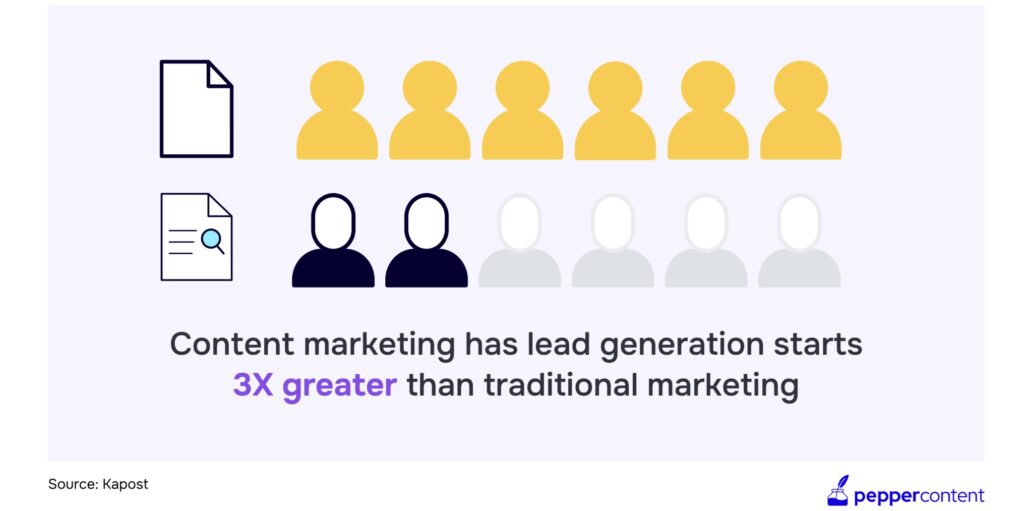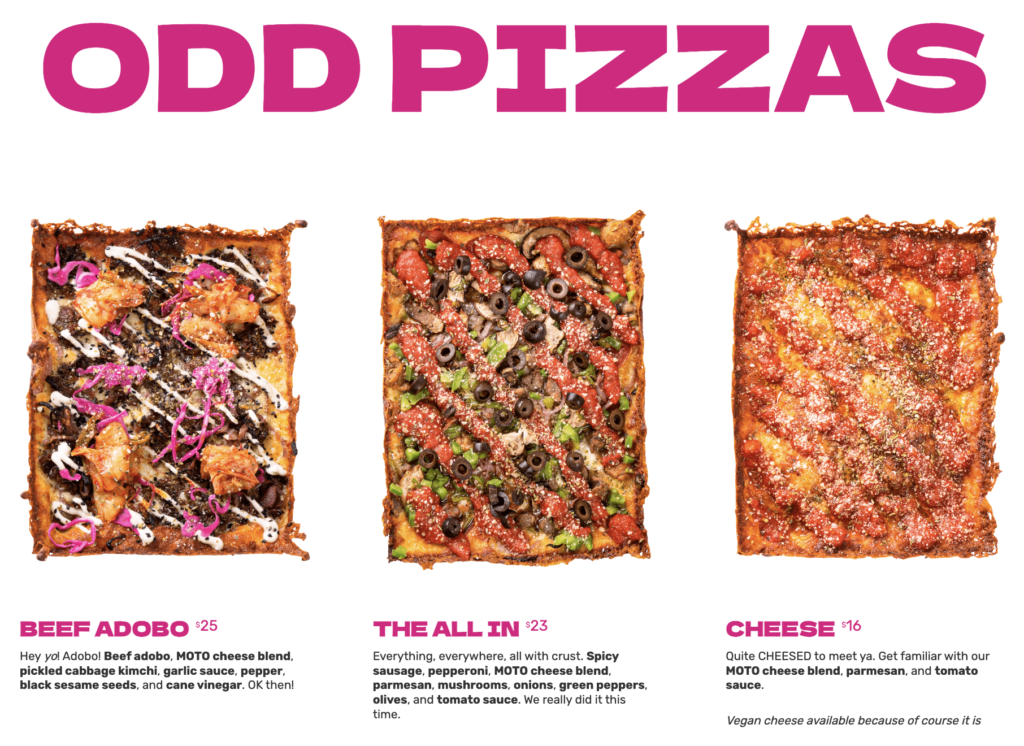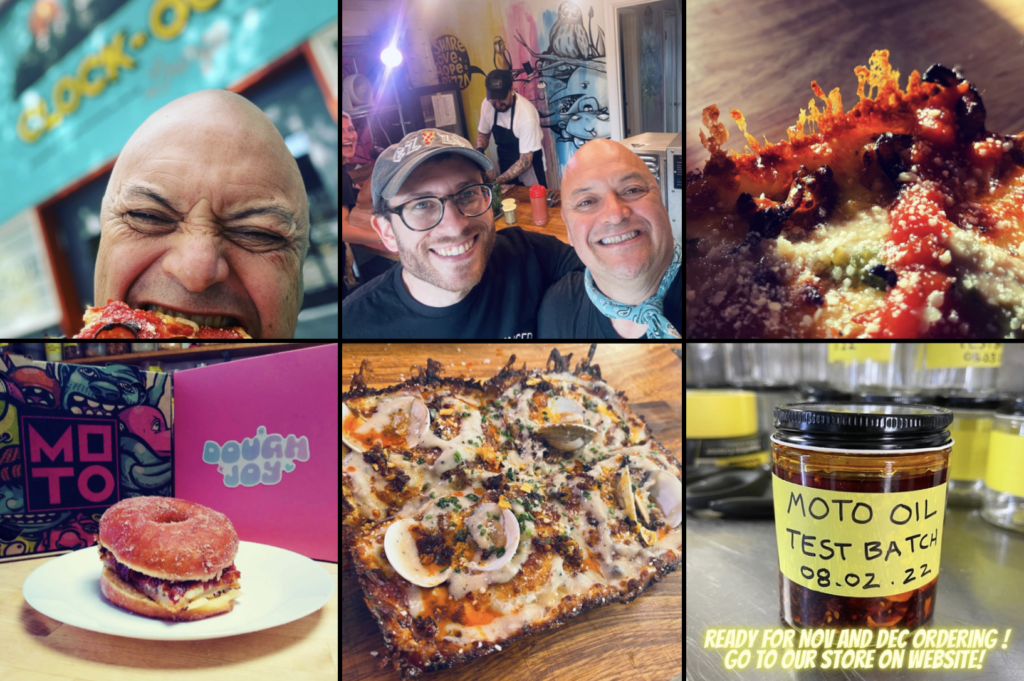To effectively promote your products or services and reach your target audience as a small business, it is essential that you understand how to utilize strategic marketing communications.
In this blog post, you will find out what exactly is strategic marketing and communications, explore 10 different types of marketing communication strategies that you can use as a small business, and look at a few real-life examples so you have a good idea how it actually works.
What is strategic marketing and communications?
Strategic marketing and communications involve the deliberate planning and execution of marketing activities to achieve specific business objectives. Unlike traditional marketing tactics that may rely on inconsistent and disconnected efforts, strategic marketing takes a more proactive and cohesive approach.
Strategic marketing goes beyond simply promoting a product or service. It involves thoroughly understanding the target market, identifying unique selling propositions, and developing a comprehensive plan to reach and engage potential customers.
With strategic marketing and communications to align your marketing efforts with overall business objectives, you can maximize your chances of success as a small business.
Why is strategic marketing communications important?
Strategic marketing and communications helps you brand awareness, attract and retain customers, drive sales, and gain a competitive edge.
1. Building brand awareness and reputation
With strategic marketing and communications, you can establish a strong brand presence in the market for your business.
According to a recent survey, 80% of consumers are more likely to buy from a brand they recognize.
By consistently delivering targeted messages to their audience, you can can increase brand recognition and awareness.
2. Attracting and retaining customers
A study by Harvard Business School revealed that increasing customer retention rates by just 5% can boost profits by 25% to 95%.
You can generate interest and build customer loyalty by crafting compelling messages that resonate with your target audience as a small business.
3. Driving sales and revenue generation
Content marketing efforts produce conversion rates three times higher than other marketing methods.
By promoting products or services with strategic marketing and communication, you can effectively generate more leads and convert them into paying customers to increase the bottom line of your business.

Read also: 5 Steps to a Winning Content Marketing Strategy for Small Business
4. Gaining competitive advantage
To stand out from the competition in today’s crowded marketplace, you can attract customers who resonate with what you have to offer by highlighting your unique value proposition in your marketing communications.
Businesses with a strategic marketing and communications approach experience a 34% increase in profitability compared to those without a defined strategy.
10 types of marketing communication strategies for small businesses
1. Content marketing
Content marketing involves creating valuable and relevant content to attract and engage your target audience. It goes beyond promotional messages and focuses on providing information, insights, and entertainment that your audience finds useful.
Here’s why content marketing is essential for small businesses:
Content marketing costs 62% less than traditional marketing and generates about three times as many leads
91% of B2B marketers and 86% of B2C marketers use content marketing as part of their strategies
To make the most of content marketing, consider these tips:
- Identify your target audience and understand their needs and interests
- Create high-quality content in various formats such as blog posts, videos, infographics, and eBooks
- Use storytelling techniques to engage your audience and build emotional connections
- Optimize your content for search engines by conducting keyword research and incorporating relevant keywords
- Promote your content through social media, email marketing, and other channels to increase its reach and visibility
Read also: Is Content Marketing Effective for Small Business?
2. Social media marketing
Social media are the most popular marketing tools for small businesses to connect with their target audience, build brand awareness, and drive engagement.
Here’s why social media marketing is significant:
The number of social media users worldwide is expected to reach 5.85 billion in 2027
69% of active users on Facebook or Instagram make purchase decisions after seeing personalized content on the social media platforms.
68% of users say YouTube videos influence their purchase decisions
To effectively leverage social media for your small business, consider these tips:
- Identify the key social media platforms that align with your target audience. For example, if you’re targeting professionals, LinkedIn may be a suitable platform
- Create a social media strategy that outlines your goals, target audience, content themes, and posting frequency
- Develop engaging and shareable content, including images, videos, and user-generated content
- Engage with your audience by responding to comments, messages, and reviews in a timely and authentic manner
- Utilize social media advertising options, such as Facebook Ads or Instagram Ads, to amplify your reach and target specific demographics
3. Email marketing
Email marketing remains a highly effective strategy for small businesses to nurture leads, build customer relationships, and drive conversions.
Here’s why email marketing is beneficial:
Campaign Monitor states that for every $1 spent on email marketing, the average return on investment (ROI) is $36.
The number of global email users is projected to reach 4.6 billion by 2025.
To make the most of email marketing, consider these tips:
- Build an email list by offering valuable content or incentives in exchange for email addresses
- Segment your email list based on demographics, interests, or purchasing behavior to send targeted and personalized campaigns
- Create compelling email campaigns with attention-grabbing subject lines and engaging content
- Automate your email marketing using tools like Mailchimp or ConvertKit to send personalized messages at scale
- Monitor and analyze email performance metrics such as open rates, click-through rates, and conversions to optimize your campaigns
Read also: How to Create Repeat Customers to Drive Consistent Revenue
4. Influencer marketing
Influencer marketing involves collaborating with influential individuals who have a significant following and credibility in your industry. You can reach a wider audience and build trust by partnering with influencers.
Here’s why influencer marketing is advantageous:
89% of marketers found influencer marketing to be effective.
Businesses are making $5.20 for every $1 spent on influencer marketing.
To leverage influencer marketing effectively, consider these tips:
- Identify relevant influencers who align with your brand values and target audience. Look for influencers with engaged followers and a track record of producing quality content
- Reach out to influencers with personalized messages, highlighting why you believe they are a good fit for your brand
- Collaborate with influencers in various ways, such as sponsored content, guest blogging, product reviews, or social media takeovers
- Set clear goals and expectations for the partnership, including key performance indicators (KPIs) and deliverables
- Measure the success of your influencer marketing campaigns by tracking metrics like engagement rates, website traffic, and conversions
5. Search engine optimization (SEO)
Search engine optimization (SEO) is the process of improving your website’s visibility in search engine results. You can increase organic traffic and attract potential customers by optimizing your website for search engines like Google. Here’s why SEO is essential:
Organic search drives 53.3% of all website traffic
75% of users never scroll past the first page of search results
To enhance your website’s SEO performance, consider these tips:
- Conduct keyword research to identify relevant keywords and phrases that your target audience is searching for
- Optimize your website’s on-page elements, including meta tags, headings, and content, by incorporating relevant keywords
- Create high-quality and shareable content thatanswers the search intent of your target audience
- Build high-quality backlinks from reputable websites to improve your website’s authority and visibility
- Regularly monitor your website’s performance using tools like Google Analytics and make necessary optimizations based on data and insights
6. Pay-per-click (PPC) advertising
Pay-per-click advertising allows you to display ads on search engines and other platforms and pay only when someone clicks on your ad. It can be an effective way to drive targeted traffic to your website and increase conversions. Here’s why PPC advertising is beneficial:
- Businesses make an average of $2 in revenue for every $1 they spend on Google Ads
- Spending on digital advertising is projected to reach $756 billion worldwide by 2024.
To optimize your PPC advertising campaigns, consider these tips:
- Set clear objectives for your PPC campaigns, such as increasing website traffic, generating leads, or driving sales
- Conduct keyword research to identify relevant keywords with reasonable search volumes and bid on them strategically
- Create compelling ad copy that highlights your unique selling propositions and encourages users to click
- Continuously monitor and analyze your PPC campaigns to identify areas for improvement and optimize your ad spend
- Test different ad variations, landing pages, and targeting options to find the most effective combinations
7. Public relations (PR)
Public relations involve managing your brand’s reputation, building relationships with media outlets and journalists, and strategically communicating your messages. With PR, you shape public perception and generate positive publicity for your small business.
While only half of customers trust paid ads, 92% of consumers trust earned media, such as recommendations from journalists or influencers
PR is almost 90% more effective in consumers’ decision making process than advertising
To leverage PR effectively, consider these tips:
- Build relationships with journalists, bloggers, and influencers in your industry by offering them valuable insights, data, or exclusive stories
- Craft compelling press releases and distribute them to targeted media outlets to generate media coverage
- Monitor media mentions and engage with journalists and influencers who mention your brand to nurture relationships
- Develop a crisis communication plan to effectively manage and mitigate any negative publicity or issues that may arise
- Leverage social media platforms to amplify your PR efforts and engage with your audience directly
8. Event marketing
Event marketing involves planning and promoting in-person or virtual events to create brand exposure, engage your target audience, and generate leads. You can leave a lasting impression on attendees in face-to-face or virtual interactions.
80% of marketers believe live events are critical to their company’s success.
68% of marketers believe events are the most effective marketing channel to generate qualified leads.
To make the most of event marketing, consider these tips:
- Define clear objectives for your events, such as increasing brand awareness, generating leads, or fostering customer relationships
- Plan and organize events that align with your target audience’s interests and preferences
- Promote your events through various channels, such as social media, email marketing, and targeted advertising
- Offer valuable content, interactive activities, or exclusive incentives to entice attendees to participate
- Capture attendee data and follow up with personalized communications to nurture relationships after the event
9. Video marketing
Video marketing has gained significant popularity as a highly engaging and shareable content format. You can use videos to effectively communicate your brand’s message, showcase products or services, and connect with your audience on a deeper level.
89% of consumers have been convinced to make a purchase after watching a brand’s video
65% of all consumer internet traffic is made up of online videos
To create impactful video marketing campaigns, consider these tips:
- Identify the platforms and formats that resonate with your target audience, such as YouTube, Instagram Stories, or TikTok
- Develop a video content strategy that aligns with your brand’s values, goals, and target audience
- Create high-quality and engaging videos that tell compelling stories, showcase your products or services, or provide valuable information
- Optimize your videos for search engines by incorporating relevant keywords in titles, descriptions, and tags
- Encourage social sharing and engagement by adding share buttons, asking viewers to comment or tag others, and hosting video contests or challenges
10. Referral marketing
Referral marketing leverages the power of word-of-mouth to encourage existing customers to refer your business to their friends, family, or colleagues. Referrals often come with a higher level of trust and credibility so they can be highly valuable.
88% of consumers trust recommendations from friends and family over other forms of advertising
Referred customers have a 37% higher retention rate, and are 4 times more likely to refer more customers compared to non-referred customers
Here are some good tips for video marketing:
- Identify platforms and formats that resonate with your target audience: Choose platforms like YouTube, Instagram Stories, or TikTok based on your audience’s preferences.
- Develop a video content strategy aligned with your brand: Create videos that align with your brand’s values, goals, and target audience.
- Create high-quality and engaging videos: Tell compelling stories, showcase products or services, or provide valuable information in your videos.
- Optimize videos for search engines: Incorporate relevant keywords in titles, descriptions, and tags to improve visibility in search results.
- Encourage social sharing and engagement: Add share buttons, ask viewers to comment or tag others, and host video contests or challenges to boost social engagement.
Example of effective strategic marketing and communications for small business
To illustrate the power of strategic marketing and communications for small businesses, let’s explore a real-life example that showcases a pizza chain in Seattle, USA, which grew from a 500sf house into a $3.6 million business. .
Moto Pizza
Moto Pizza’s distinctive regular-shaped pizzas, long waiting times, and customer-centric approach have established them as a unique and highly regarded pizza destination.
Here are their strategic marketing and communications that have garnered them significant attention:
Distinctive brand and product identity
Moto Pizza has developed a unique brand identity that sets them apart visually from competitors.
With eye-catching branding, including vibrant colors and cheerful characters, and their signature regular-shaped pizzas and banana ketchup, their innovative approaches have captured the attention of customers and created a memorable experience.

Strategic use of social media
Moto Pizza recognizes the power of social media and has effectively utilized platforms like Instagram and TikTok to engage with their audience.
By sharing visually enticing content, interacting with followers, and creating a sense of excitement, they have successfully built a strong online presence. Their viral posts and online buzz have contributed to their popularity and increased demand.

Creating anticipation and exclusivity
Moto Pizza’s popularity has led to high demand and waiting times. Customers eagerly anticipate their turn to enjoy Moto Pizza’s offerings, sometimes waiting for months to secure an order. This exclusivity has fueled excitement and increased the perceived value of their pizzas, turning them into highly sought-after culinary experiences.

Word-of-mouth and customer referrals
Moto Pizza goes beyond providing excellent pizza by fostering strong relationships with their customers. They offer complimentary ice cream to those waiting to place an order, creating a pleasant and memorable experience even before customers taste their pizzas. This added touch of hospitality enhances customer loyalty and generates positive word-of-mouth.
Key takeaways
The Moto Pizza example highlights the importance of strategic marketing and communications for small businesses. As a small business owner, I encourage you to implement strategic marketing and communications and tailor your approach to achieve your specific business objectives.
With strategic marketing and communications, you can create brand awareness, attract and retain customers, drive sales, and gain a competitive edge:
- Differentiation and branding: Developing a unique brand identity and voice helps small businesses stand out from the competition and build a loyal customer base.
- Targeted digital marketing: Leveraging social media platforms, email marketing, and influencer collaborations allows businesses to reach their target audience effectively and engage with them on a personal level.
- Partnerships and community engagement: Forming partnerships with complementary businesses and actively participating in community events foster brand awareness, trust, and customer loyalty.
- Measurement and adaptation: Regularly monitoring key performance indicators and analyzing the impact of marketing efforts allows businesses to refine their strategies and optimize their marketing budget.
Remember, strategic marketing and communications are ongoing processes that require consistent effort and adaptation. Embrace the power of these strategies to effectively communicate your brand’s message, build meaningful relationships, and ultimately drive business growth.

